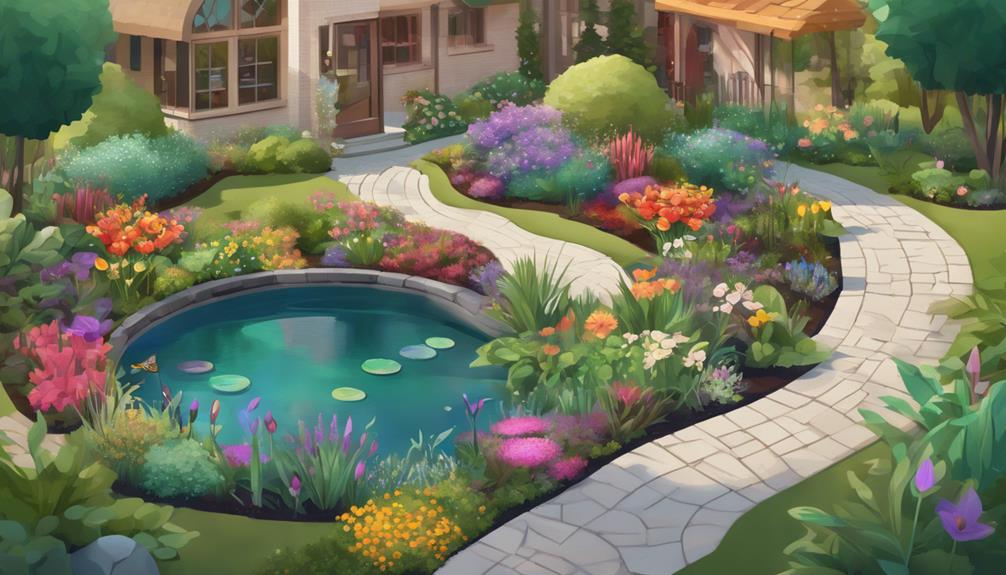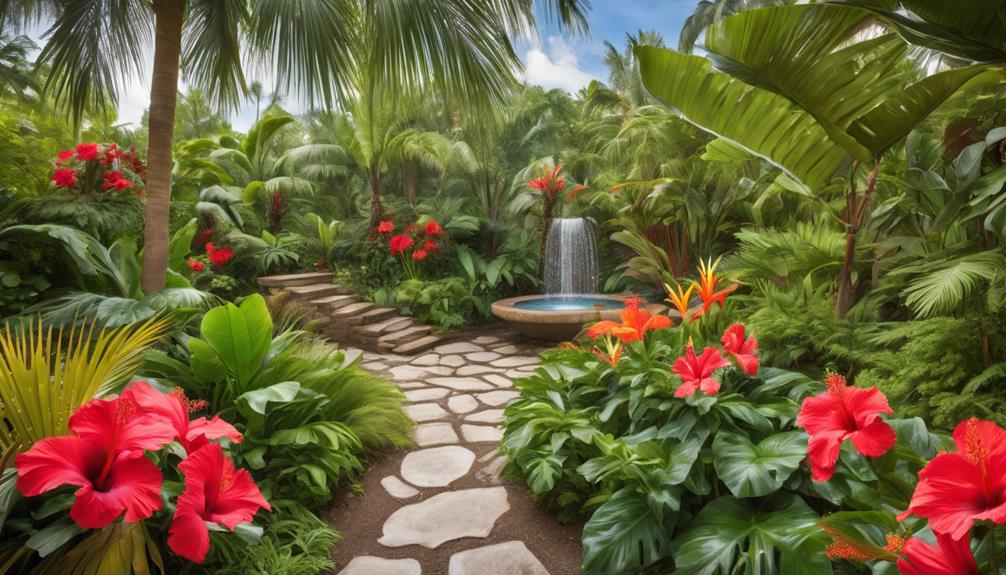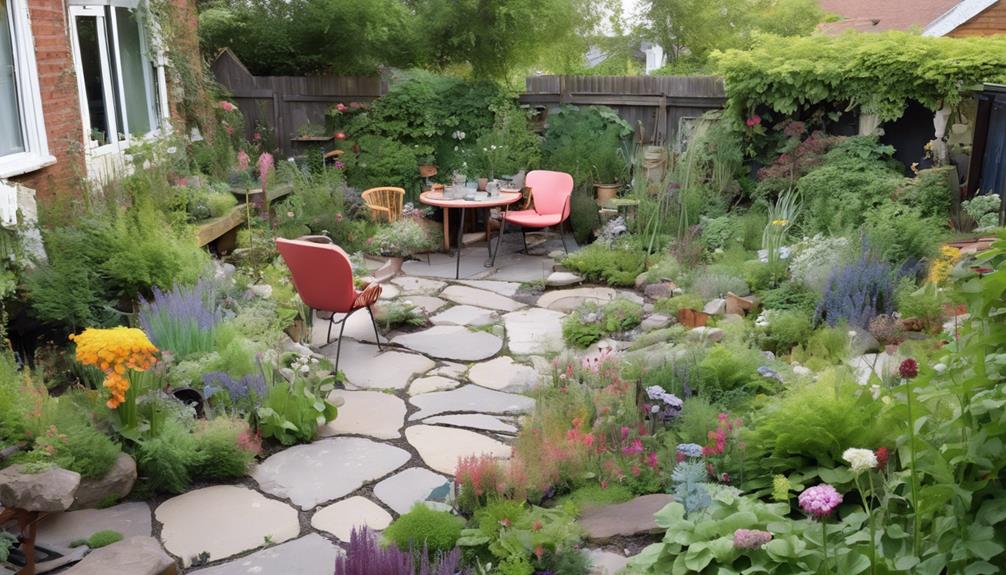
Top 3 Kid-Friendly Garden Design Ideas
17 September 2024
Why Choose Native Plants for Biodiversity in Gardens?
17 September 2024The best garden design software for layout planning features user-friendly interfaces that facilitate intuitive navigation. This enhances creativity and efficiency in designing outdoor spaces.
Advanced visualisation tools, including 3D rendering and augmented reality, provide realistic previews of garden layouts, allowing for informed decision-making. The integration of plant libraries and growth simulation technologies further assists in selecting plants that thrive together.
Collaboration features promote seamless teamwork, ensuring feedback is instantaneous and effective. This combination of functionality and support makes the software invaluable for both professionals and enthusiasts.
For more detailed information on the leading options available, investigate further insights and recommendations.
Software Features and Benefits
Garden design software provides a user-friendly interface that simplifies the design process for both novices and experienced landscapers.
Furthermore, its 3D visualisation capabilities allow users to see their designs come to life, facilitating better decision-making and planning.
Together, these features enhance the overall gardening experience, making it more accessible and enjoyable.
User-Friendly Interface
A user-friendly interface is a fundamental aspect of garden design software, greatly enhancing the overall experience for both novice and experienced users. Such interfaces facilitate intuitive navigation, allowing users to efficiently access tools and features vital for effective layout planning.
By employing clear icons, accessible menus, and streamlined workflows, these software solutions minimise the learning curve and encourage creativity. Moreover, a well-designed interface provides customisation options that enable users to tailor their workspace according to their preferences, optimising productivity.
The integration of drag-and-drop functionality further empowers users to manipulate elements effortlessly, enhancing design precision. Ultimately, an effective user-friendly interface not only fosters engagement but also cultivates a deeper understanding of garden design principles, crucial for achieving mastery in this art form.
3D Visualization Capabilities
Effective garden design software not only prioritises a user-friendly interface but also offers robust visualisation capabilities that significantly enhance the planning process.
High-quality 3D rendering enables users to view their garden layouts from various angles, providing a realistic preview of the final design. Such visualisations assist in evaluating spatial relationships, plant arrangements, and overall aesthetics before implementation.
Advanced software often includes features like virtual walkthroughs and augmented reality, allowing users to immerse themselves in their designs. These tools facilitate informed decision-making, ensuring that each element harmonises within the landscape.
Furthermore, accurate scaling and shadow simulations increase the authenticity of the visualisation, allowing for precise planning that aligns with the user's vision and environmental considerations.
User-Friendly Interface
A user-friendly interface is essential in garden design software, as it enhances the overall experience for both novice and experienced users.
Features such as drag-and-drop design functionality, a customisable plant library, and real-time collaboration tools significantly simplify the design process.
These elements not only improve accessibility but also encourage creativity and efficiency in garden planning.
Drag-And-Drop Design Functionality
How can garden design software enhance the creative process for both amateurs and professionals alike? The drag-and-drop design functionality streamlines layout planning, allowing users to intuitively manipulate design elements. This feature not only boosts creativity but also fosters precision in planning.
Key advantages include:
- Intuitive Interface: Easily navigate through tools and options, minimising the learning curve.
- Real-Time Adjustments: Instantly visualise changes, leading to more informed design decisions.
- Efficient Workflow: Quickly rearrange elements, saving time and effort in the design process.
- Improved Collaboration: Share designs with clients or colleagues effortlessly, facilitating constructive feedback.
Ultimately, drag-and-drop functionality empowers users to transform their visions into tangible garden designs with unmatched ease and efficiency.
Customizable Plant Library
The customisable plant library feature in garden design software serves as a crucial resource for users, enabling them to select and arrange plant species that best suit their specific design needs.
This functionality enhances the design process by offering multiple advantages:
- Varied Species Selection: Access to a wide range of plants, including native and exotic varieties, allows for personalised garden aesthetics.
- Customisation Options: Users can modify plant attributes, such as size, colour, and growth habits, ensuring alignment with their vision.
- Seasonal Planning: The library often includes seasonal information, helping users schedule plantings for optimal growth and visual impact.
- Compatibility Insights: Users can evaluate plant compatibility, ensuring that chosen species thrive together in the intended garden environment.
Real-time Collaboration Tools
Integrating real-time collaboration tools within garden design software significantly enhances the user experience, particularly when working with customisable plant libraries.
These tools facilitate seamless interaction among designers, clients, and stakeholders, fostering a productive environment that promotes creativity and efficiency.
Key features to evaluate include:
- Instant Messaging: Facilitate quick discussions and feedback directly within the software.
- Shared Workspaces: Allow multiple users to collaborate on the same project simultaneously.
- Version Control: Track changes and revert to previous designs effortlessly, ensuring all collaborators remain aligned.
- Visual Annotations: Enable users to mark specific areas for discussion, clarifying intentions and suggestions.
Software Installation Guide
To effectively utilise garden design software, the initial step involves creating an account, which serves as the gateway to the platform's features.
Once registered, users can optimise their design workflow by exploring various tools and functionalities tailored to enhance their creative process.
Furthermore, mastering layering techniques will add depth and texture to designs, allowing for more visually appealing results.
Create an Account First
Creating an account is a vital initial step in the garden design software installation process, as it enables users to access a variety of features specifically designed to enhance their landscaping projects.
By registering, users can utilise tools that elevate their design experience and facilitate project management.
To successfully create your account, please follow these steps:
- Visit the official website: Navigate to the software's homepage to commence the registration process.
- Select the 'Sign Up' option: Locate the registration link, which is typically prominently displayed.
- Provide required information: Fill in your name, email address, and password.
- Verify your email: Check your inbox for a confirmation email to activate your account.
Completing these steps ensures you are ready to harness the software's full potential.
Optimize Your Design Workflow
When seeking to optimise your design workflow, it is essential to familiarise yourself with the installation process of the garden design software.
A smooth installation lays the groundwork for efficient design practices and enhances your creative potential.
Follow these key steps to ensure a seamless installation:
- Check System Requirements: Verify that your device meets the necessary specifications for optimal performance.
- Download the Software: Obtain the latest version from the official website to ensure you have all updates.
- Follow Installation Prompts: Carefully read and adhere to the installation instructions to avoid common pitfalls.
- Activate Your Licence: Enter your licence key promptly to gain access to all features and functionalities.
Layering for Depth and Texture
In garden design, layering is essential for achieving depth and texture, allowing elements to harmonise and stand out simultaneously.
Effective software tools facilitate this process, enabling designers to visualise and manipulate layers with precision. Mastering layering techniques can significantly enhance your garden designs.
Consider the following crucial aspects:
- Foreground Elements: Utilise low-growing plants to create a vibrant base layer.
- Mid-level Foliage: Incorporate shrubs and perennials for visual interest and structure.
- Vertical Features: Add trellises or tall plants to draw the eye upwards, enhancing dimension.
- Seasonal Layers: Plan for seasonal changes in foliage and blooms to maintain dynamic interest throughout the year.
Enhanced Design Visualization Tools
Many garden design software applications now incorporate enhanced design visualisation tools that allow users to see their ideas come to life in vivid detail. These advanced features, such as 3D rendering and augmented reality, enrich the design process by enabling users to manipulate elements and visualise the final outcome.
| Feature | Benefits | Examples |
|---|---|---|
| 3D Rendering | Provides realistic perspectives | SketchUp, Garden Planner |
| Augmented Reality | Allows real-time interaction with designs | iScape, Garden Design Pro |
| Plant Database | Offers diverse species suggestions | SmartPlant, Planter |
Landscape Design for Clients
Effective landscape design for clients relies on the integration of advanced visualisation tools, which enable a clear representation of proposed spaces.
Furthermore, incorporating plant growth simulations allows clients to comprehend how their gardens will evolve over time.
Seasonal colour palette integration further enhances the design process by providing a dynamic view of how landscapes will change throughout the year.
D Visualization Tools
The utilisation of advanced 3D visualisation tools has revolutionised the landscape design process for clients, allowing for a more immersive and interactive experience.
These tools enable designers to create lifelike representations of outdoor spaces, ensuring that clients can visualise their projects before implementation.
Key benefits include:
- Enhanced Decision-Making: Clients can explore diverse design options in real-time, facilitating informed choices.
- Improved Communication: Visual models bridge the gap between designer intent and client understanding.
- Customisation Opportunities: Clients can manipulate elements, enabling personalised design adjustments.
- Reduced Errors: A clear visual representation minimises misinterpretations, decreasing costly revisions during the construction phase.
D Plant Growth Simulation
Building on the advancements in 3D visualisation tools, the integration of plant growth simulation technology enhances the landscape design process by enabling clients to comprehend how their gardens will evolve over time.
This dynamic approach facilitates a more informed decision-making process, fostering a deeper connection between clients and their outdoor spaces.
Key benefits of plant growth simulation include:
- Realistic Growth Projections: Visualise plant size and health over time.
- Seasonal Dynamics: Understand how plants will interact throughout different seasons.
- Maintenance Planning: Anticipate care needs based on growth patterns.
- Biodiversity Assessment: Evaluate the ecological impact of plant selections.
Seasonal Color Palette Integration
A well-curated seasonal colour palette is essential for creating a visually engaging landscape that resonates with clients throughout the year. Effective integration of seasonal hues not only enhances aesthetic appeal but also fosters emotional connections with outdoor spaces.
To achieve mastery in seasonal colour palette integration, consider the following:
- Plant Selection: Choose a diverse array of plants that bloom in different seasons to ensure continuous colour.
- Focal Points: Incorporate hardscapes or ornamental features that complement seasonal colours.
- Contrast and Harmony: Balance vibrant blooms with calming greens and neutrals for visual interest.
- Client Engagement: Involve clients in colour selection to align the design with their preferences and lifestyle.
Frequent User Interface Confusion
Frequent user interface confusion can significantly hinder the effectiveness of garden design software.
Implementing intuitive tooltips, interactive tutorials, and a user feedback integration mechanism can enhance the user experience and facilitate smoother navigation.
Addressing these aspects is crucial for ensuring that users can optimise the software's potential without frustration.
Intuitive Tooltips for Guidance
Navigating garden design software can often be an intimidating task, particularly for users unfamiliar with complex interfaces.
Intuitive tooltips serve as vital navigational aids, providing clarity and context that enhance the user experience. These prompts can significantly alleviate confusion and facilitate mastery of the software.
Key benefits of intuitive tooltips include:
- Contextual Information: Tooltips offer immediate explanations of features as users hover over them.
- Error Prevention: They can steer users away from common mistakes by providing tips and best practices.
- Improved Learning: Tooltips support skill development by reinforcing knowledge as users engage with the software.
- Efficiency Increase: Quick access to information accelerates the design process, allowing for greater creativity and reduced frustration.
Interactive Tutorials for Users
Many users encounter significant challenges when exploring the user interface of garden design software, leading to frequent confusion and frustration.
To improve user experience and foster mastery, interactive tutorials can play a vital role. These tutorials should focus on several key areas:
- Step-by-Step Navigation: Clearly guide users through fundamental features and functionalities.
- Scenario-Based Learning: Provide real-world design challenges that users can solve interactively.
- Visual Aids: Incorporate diagrams and video walkthroughs to reinforce concepts visually.
- Progress Tracking: Allow users to monitor their learning path, ensuring they revisit complex areas as needed.
User Feedback Integration Mechanism
User feedback plays a crucial role in addressing the persistent confusion experienced by users navigating garden design software interfaces. By actively integrating user insights, developers can enhance usability and streamline the design process.
The following mechanisms are essential for effective user feedback integration:
- User Surveys: Regularly solicit feedback through structured surveys to identify areas of difficulty.
- Beta Testing Groups: Involve users in beta testing to gain real-time insights on interface navigation.
- In-Software Feedback Tools: Implement tools that allow users to report issues directly within the software.
- Analytics Tracking: Utilise data analytics to monitor user interactions and identify common areas of confusion.
These mechanisms not only refine the interface but also empower users, fostering a more intuitive design experience that boosts overall satisfaction.
Why Choose TKL Birmingham Gardener
In relation to transforming outdoor spaces, TKL Birmingham Gardener stands out as a premier choice for both homeowners and businesses.
Their innovative approach to garden design is rooted in a commitment to excellence, utilising advanced software that allows for precise planning and visualisation. This enables clients to engage meaningfully with their projects, ensuring that each design reflects their unique vision and functional requirements.
TKL Birmingham Gardener prioritises sustainability, integrating eco-friendly practices into their designs, which is increasingly crucial in the current environmental landscape.
Their team comprises skilled professionals who possess extensive knowledge of horticulture and landscape architecture, providing expert guidance throughout the design process.
Ultimately, choosing TKL Birmingham Gardener guarantees a sophisticated, tailored approach to achieving remarkable outdoor environments.
Common User Questions Answered
A range of common questions arise when individuals consider utilising garden design software, reflecting their desire to understand the capabilities and benefits of these tools.
Users often inquire about the software's compatibility with different devices and systems. Many also seek clarification on whether these programmes provide customisable templates to suit distinct garden styles.
Compatibility with 3D visualisation and augmented reality features is another frequent concern, as users aim for an immersive planning experience.
Moreover, questions regarding the learning curve and available support resources are prevalent, as individuals work to enhance their proficiency.
Ultimately, users often wish to know if the software allows for easy updates to reflect seasonal changes, ensuring their designs remain relevant throughout the year.
Final Thoughts and Recommendations
Choosing the appropriate garden design software can significantly enhance the landscape planning experience. Selecting the right tools not only fosters creativity but also streamlines the execution of your vision.
Here are four key considerations to guide your decision:
- User-Friendliness: Opt for software that balances functionality with an intuitive interface.
- Features: Evaluate the range of design tools, including 3D visualisation and plant databases tailored to your region.
- Compatibility: Verify software compatibility with various devices and operating systems for flexible access.
- Support and Community: Choose programmes with robust customer support and an active user community for troubleshooting and inspiration.
With these criteria, you can make an informed decision that elevates your landscape design projects to new heights.




